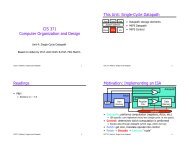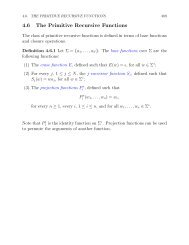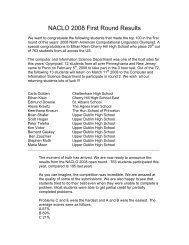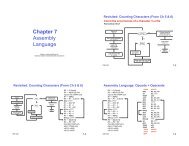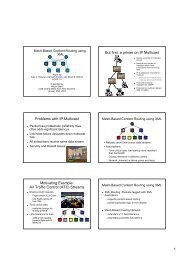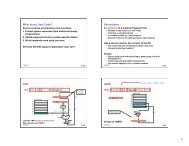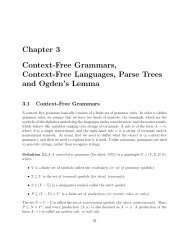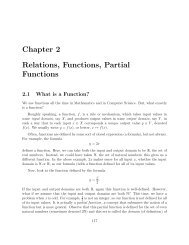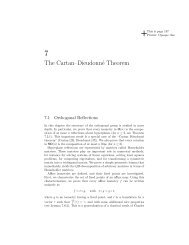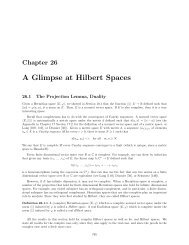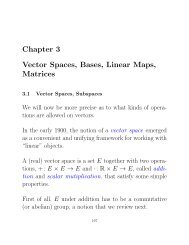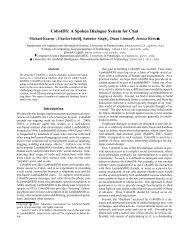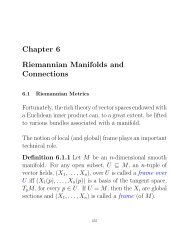CIS 542 Embedded Systems Programming – Summer 2013 Lecture ...
CIS 542 Embedded Systems Programming – Summer 2013 Lecture ...
CIS 542 Embedded Systems Programming – Summer 2013 Lecture ...
Create successful ePaper yourself
Turn your PDF publications into a flip-book with our unique Google optimized e-Paper software.
We've already seen how to make sure that it progresses to the right state, but now we also want to<br />
check that it correctly updates the speed.<br />
Obviously, the solution here is testing. Testing is the activity of giving input to the code to see how it<br />
behaves. The goal of testing is not to show that it is correct, but rather to show that there are bugs (or<br />
faults, as we say).<br />
Broadly speaking, there are two ways to create test cases for a piece of code:<br />
• Black-box testing: look at the specification and come up with inputs that exercise as much of<br />
the spec as possible, i.e. try all the different conditions that are described<br />
• White-box testing: look at the code and come up with inputs that exercise as many<br />
statements/paths/branches as possible, i.e. try all the code<br />
Let's start with black-box testing. Consider this part of the spec:<br />
“if the driver chooses to accelerate, the speed increases by 10, unless that would put the speed over<br />
100, in which case it doesn't change”<br />
There are two conditions here that we'd want to check:<br />
1. the driver chooses to accelerate, but that doesn't put the speed over 100<br />
2. the driver chooses to accelerate, and that does put the speed over 100<br />
For each of these, we make the assumption that if it works correctly for some input, it will also work<br />
correctly for “similar” inputs. This is known as equivalence partitioning. For instance, if we decide to<br />
use 20 as the speed for #1, and it works correctly, we probably don't need to also test 21, 22, 30, 40, 80,<br />
etc.<br />
So we can now create some test code like this:<br />
/* this tests accelerating but not going over 100 */<br />
int curr_speed = 20;<br />
enum events event = accel;<br />
enum states curr_state = moving;<br />
int new_speed = control(curr_speed, event, &curr_state);<br />
if (new_speed != 30)<br />
printf(“control returned wrong speed!\n”);<br />
if (curr_state != moving)<br />
printf(“control returned wrong state!\n”);<br />
/* this tests accelerating but trying to go over 100 */<br />
curr_speed = 95;<br />
event = accel;<br />
curr_state = moving;<br />
new_speed = control(curr_speed, event, &curr_state);<br />
if (new_speed != 95)<br />
printf(“control returned wrong speed!\n”);<br />
if (curr_state != moving)<br />
printf(“control returned wrong state!\n”);



